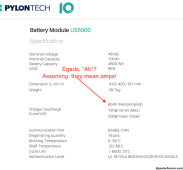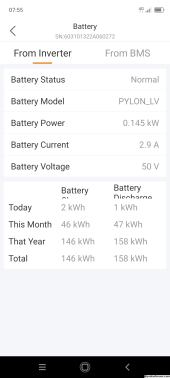I have Solis 3kW inverter with
Battery Phylontech 4.8kWh
Phylon US5000
4.8kWh Li-ion solar battery 48v
With I think 100A discharge capability.
The current charge and discharge current setting for both are 80A.
Charge SOC 20%
Force discharge 15%
What is ideal charge/discharge current setting?
As this has impact on battery longevity.
Also, as I only have one battery would 2 be better for running the house mainly from battery?
Any thoughts, as I am a rookie!
Battery Phylontech 4.8kWh
Phylon US5000
4.8kWh Li-ion solar battery 48v
With I think 100A discharge capability.
The current charge and discharge current setting for both are 80A.
Charge SOC 20%
Force discharge 15%
What is ideal charge/discharge current setting?
As this has impact on battery longevity.
Also, as I only have one battery would 2 be better for running the house mainly from battery?
Any thoughts, as I am a rookie!





